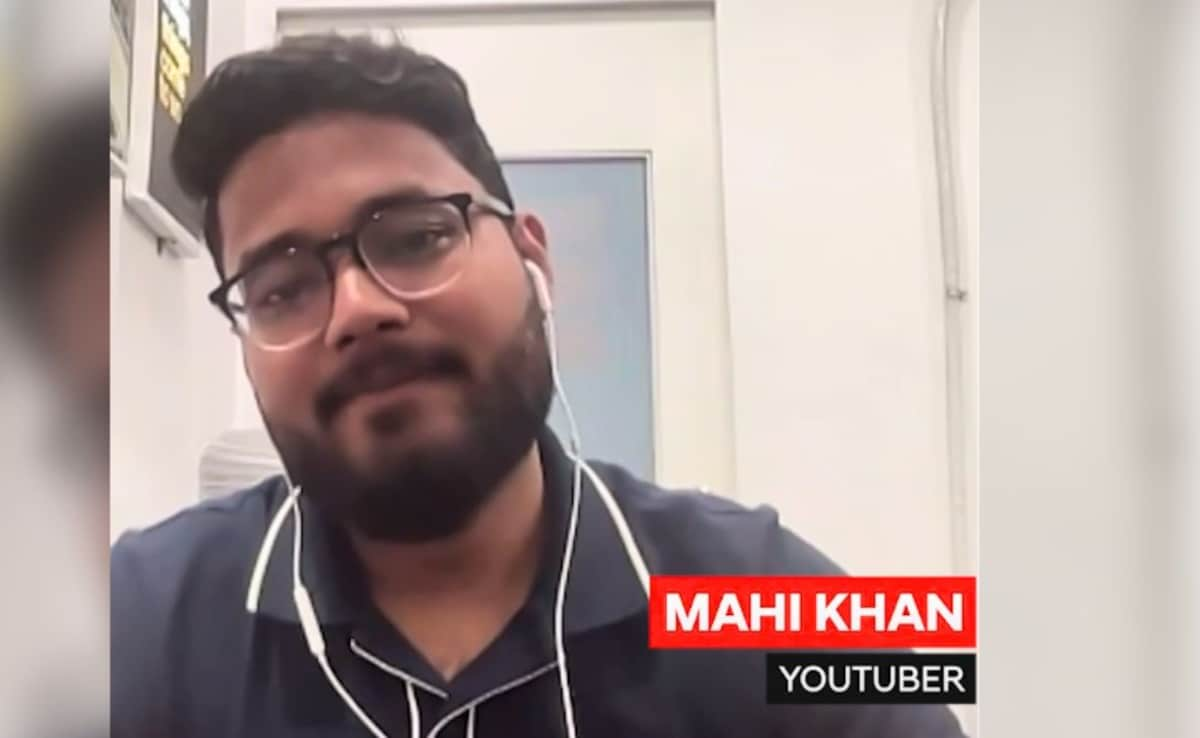ARTICLE AD BOX
Last Updated:October 24, 2025, 12:07 IST
Professor Manindra Agrawal, spearheading Delhi's artificial rain project, says the capital could see successful cloud seeding around October 29, when good cloud presence is likely.

IIT Kanpur's Professor Manindra Agrawal is spearheading Delhi's artificial rain project. (Image: YouTube)
If all goes as expected and the skies hold enough moisture, Delhi could witness its first-ever artificial rain on October 29, potentially bringing its toxic post-Diwali air down to an AQI below 100, says Professor Manindra Agrawal, the IIT Kanpur scientist spearheading the capital’s ambitious cloud seeding project.
Following a technically successful trial in Burari, Agrawal said the team is “all set for Delhi," with only one last variable — the availability of a pilot — being worked out. “We expect good cloud presence on the 29th; what happens will depend on the moisture content that day. If it’s adequate, the results could be remarkable," he told News18 in an exclusive conversation, detailing the science and strategy behind the experiment that could make Delhi breathe easy again.
Here are edited excerpts of the interview with Professor Agrawal:
Q: Professor Agrawal, let’s begin with the Burari trial. What exactly was tested, and how did it go?
Professor Agrawal: The Burari test flight went very well — we achieved what we set out to do. Technically, it was a complete success. We carried out all essential protocols including flare testing, fitment checks, and coordination assessments. The aircraft flew from IIT Kanpur’s airstrip through Kanpur, Meerut, Khekra, Burari, Sadakpur, Bhojpur, and Aligarh, and returned to Kanpur. Between Khekra and Burari, cloud seeding flares were successfully fired. We confirmed the aircraft’s operational stability, the durability of the instruments, and adherence to safety standards.
Q: What were the weather conditions like during the Burari trial?
Professor Agrawal: According to our pilot’s report and the Windy professional data, Delhi’s sky wasn’t very cloud-heavy that day. Only two small patches of clouds were identified near Burari for testing. We targeted these patches, fired the flares, and confirmed that the aircraft and seeding devices functioned properly. The aim of this trial wasn’t to induce rain but to validate our systems and readiness — and that objective was fully met.
Q: Could you explain the technology used — what is cloud seeding and how does it work?
Professor Agrawal: Cloud seeding is a weather modification technique. We release specially designed flares containing silver iodide and sodium chloride compounds from the aircraft into moisture-bearing clouds. These compounds act as condensation nuclei, helping water droplets form faster. If the atmosphere has enough moisture, this process enhances precipitation — essentially “nudging" the clouds to rain. That rain can wash away pollutants and drastically improve air quality.
Q: Delhi’s air quality after Diwali has been toxic, with AQI touching ‘severe’ levels in parts of the city. Can artificial rain really make a difference?
Professor Agrawal: Absolutely, provided the atmospheric conditions are right. The extent of pollution reduction depends on the amount of moisture available in the air. If we get sufficient moisture on the day of the full-scale operation, we expect the AQI to drop below 100 — that’s “good" or “moderate" air, comparable to hill stations like Rishikesh or Manali. Even a single effective round of rain can significantly bring down PM2.5 and PM10 levels for several days.
Q: What are the next steps for the Delhi operation?
Professor Agrawal: We’re all set for Delhi. The Burari trial validated our systems. The next step is the full-scale cloud seeding, tentatively between October 28 and 30, depending on weather conditions. The India Meteorological Department (IMD) has forecasted good cloud presence around those dates. The only variable now is the availability of the right pilot and the actual cloud conditions on the day. We’re working on both. If we get favourable skies, we’re ready to go.
Q: What role are IIT Kanpur and your team playing in this collaboration?
Professor Agrawal: IIT Kanpur is leading the scientific and technical framework of this project. We designed the operation plan, selected the chemical composition, and coordinated with the IMD, IISc, and Delhi government for weather modelling, aircraft calibration, and safety protocols. The Delhi government has shown remarkable commitment in adopting a scientific approach to combat pollution — this is a first-of-its-kind effort in India aimed at urban air purification rather than drought management.
Q: Many see this as an experiment. How do you see it — a temporary fix or a long-term solution?
Professor Agrawal: I’d say it’s an emergency response tool, not a permanent cure. Cloud seeding cannot replace long-term measures like clean energy transition, stubble management, or public transport reforms. But when air quality hits an emergency threshold, this can offer immediate relief — a few days of clean, breathable air. It’s a way to give people a break from hazardous pollution levels.
Q: How confident are you about the success of Delhi’s first artificial rain attempt?
Professor Agrawal: Scientifically and technically, we’re confident. The systems have been tested, logistics are ready, and coordination between IIT Kanpur, IISc, IMD, and Delhi authorities is in place. The only element beyond human control is the weather. If we get stable, moisture-rich clouds — not thunderstorms or turbulent systems — we should succeed. As I said, all we need now is a favourable sky.
Q: If successful, could this model be replicated in other cities?
Professor Agrawal: Certainly. If Delhi’s experiment works, this can serve as a template for other highly polluted urban centres — Kanpur, Lucknow, Patna, Ghaziabad, even Mumbai. The feasibility depends on local weather and administrative willingness. Our team is ready to assist wherever scientific conditions permit.
Q: Finally, what’s your message to citizens waiting for relief from Delhi’s pollution?
Professor Agrawal: I’d say — stay hopeful. This initiative represents science and governance working hand in hand for public health. Artificial rain won’t solve the pollution crisis permanently, but it’s a step toward a cleaner, more breathable future. If all goes as planned, Delhiites might soon witness not just rain, but science falling from the sky.
First Published:
October 24, 2025, 12:07 IST
News india If All Goes Well, Cloud Seeding Can Bring Delhi's AQI Below 100: IIT Kanpur Scientist | Interview
Disclaimer: Comments reflect users’ views, not News18’s. Please keep discussions respectful and constructive. Abusive, defamatory, or illegal comments will be removed. News18 may disable any comment at its discretion. By posting, you agree to our Terms of Use and Privacy Policy.
Read More

 12 hours ago
5
12 hours ago
5









 English (US) ·
English (US) ·